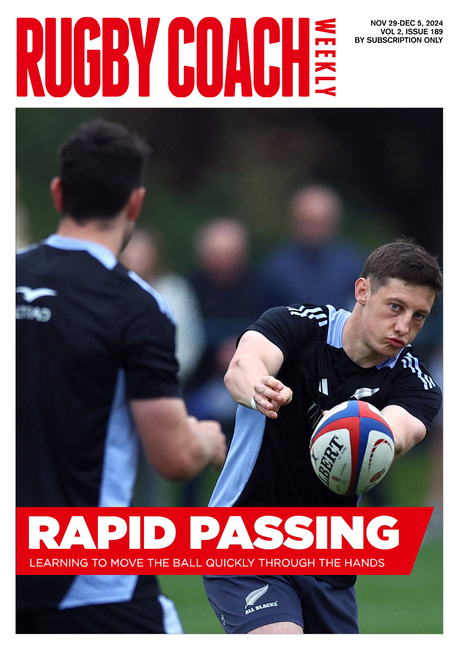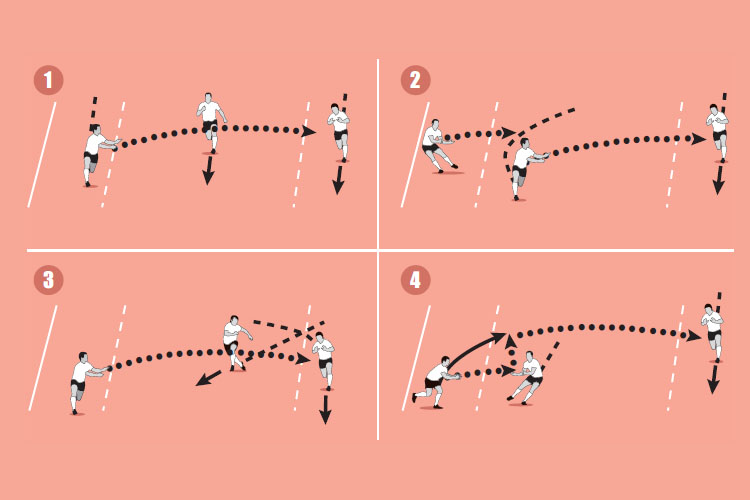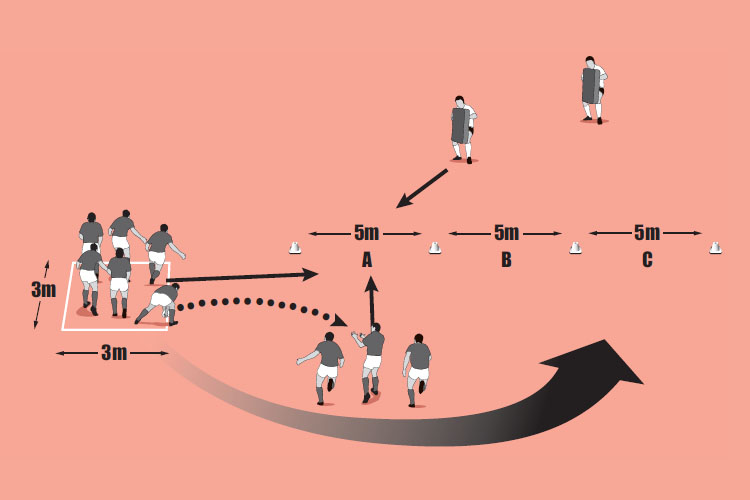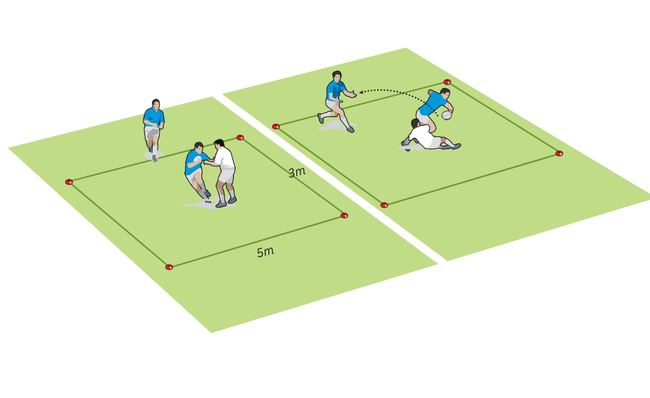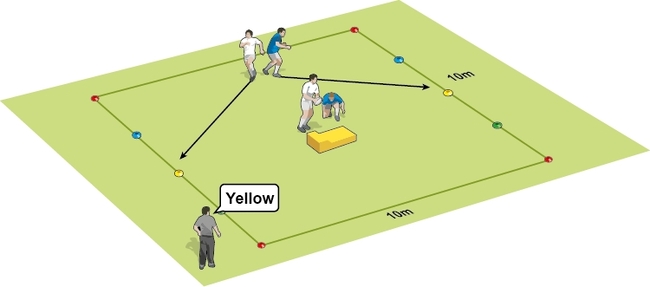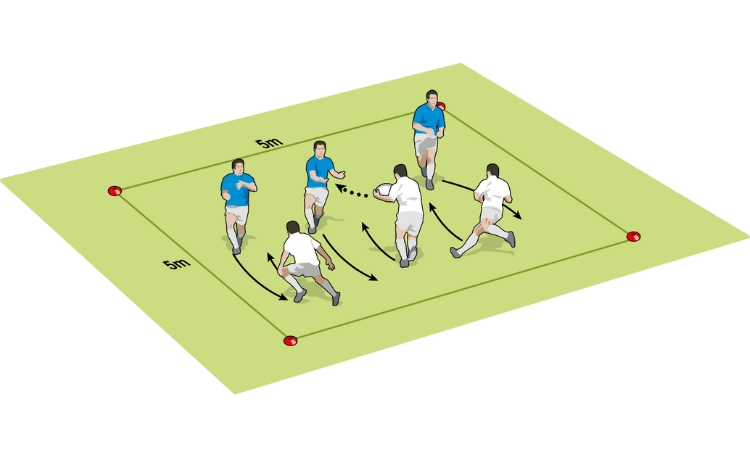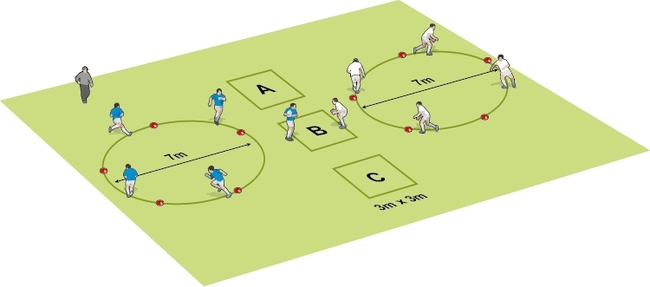Scramble rucks
Even when your players run predictable lines, there are still going to be occasions when they need to support the tackled player. Perhaps picking up a loose pass or a move does not quite work: The ball carrier will be momentarily isolated on the ground and your players need to be over the ball to secure it. Here is a session to practise this.
Warm up time: 5-7
Session time: 8-10
Development time: 10-15
Game time: 10-15
Warm down time: 5-8
What to think about
This is a very practical session. Players are working on their reactions and decision making, so you do not want to be stopping them too much to focus on technique. In the warm-up, you can focus on specific technical points but here you want to be working players on the situations, with plenty of chances to have a go. The timings on this session will vary depending on the fitness of your players. There is a lot of physical work and they will tire easily. You can either work with this fatigue factor, replicating a match situation or you might want to work them in shorter bursts to retain their energy levels.set-up
- Tackled player: Fight to the ground to present the ball.
- Support players: Identify threats as you arrive and clear them beyond your team mate on the ground.
- It is better to be late and ready than early and unprepared. Good technique is crucial.
What you get your players to do
Split into 4v4 with a separate ball carrier and defender. The groups of four run around the circles (see picture 1), with only one player allowed between each cone at anyone time . When you shout a letter, the ball carrier runs into and through one of three boxes, where the defender will tackle him (see picture 2). At the same time, the circle attackers and defenders react to win the ball. Play until there is either a turnover or the ball is clearly won by the attacking team.
Development
Remove either a defender or attacker. Throw the ball just outside the boxes in the attacking side. Change the position of the circles so one is further from the attacking boxes.
Game situation
Split into teams of seven. Put two players from each team inside each of the two 15m x 10m boxes with a ball each and then three players from each team between the boxes (see picture 3). Start playing two games of 2v2, full contact then release the other players. They have to decide which situation to support and can opt for two in one box, and one in the other but once in the boxes, players cannot leave them. Finish that box on a try or infringement. You can either have one team start with both balls, or you can give one ball to each team.
What to call out
- “Take players over the ball away or off their feet”
- “Stay balanced into the contact area – chop your feet and keep low”
- “Drive your hips over the ball so you are strongest”
Newsletter Sign Up
Coaches Testimonials

Gerald Kearney, Downtown Las Vegas Soccer Club

Paul Butler, Florida, USA

Rick Shields, Springboro, USA

Tony Green, Pierrefonds Titans, Quebec, Canada
Subscribe Today
Be a more effective, more successful rugby coach
In a recent survey 89% of subscribers said Rugby Coach Weekly makes them more confident, 91% said Rugby Coach Weekly makes them a more effective coach and 93% said Rugby Coach Weekly makes them more inspired.
Get Weekly Inspiration
All the latest techniques and approaches
Rugby Coach Weekly offers proven and easy to use rugby drills, coaching sessions, practice plans, small-sided games, warm-ups, training tips and advice.
We've been at the cutting edge of rugby coaching since we launched in 2005, creating resources for the grassroots youth coach, following best practice from around the world and insights from the professional game.


